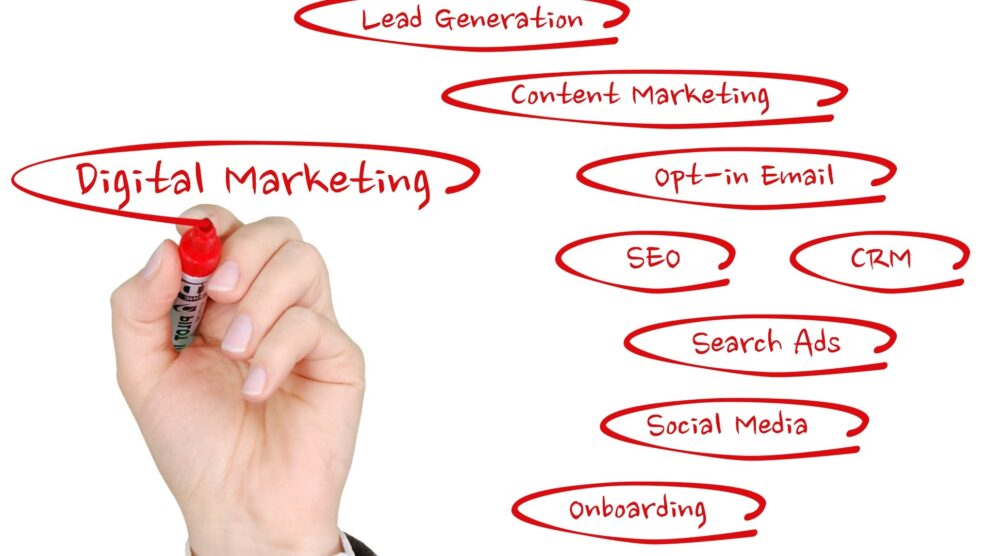“Are there specific digital marketing strategies for today’s business landscape?”
We hear this question all the time.
In the face of cutthroat competition, economic downturns, and quotas, marketers don’t want to waste time and resources chasing after unvetted digital tactics.
Like me, they want strategies that bring positive ROI, so we can meet our targets, grow the business and keep stakeholders happy.
If these are strategies you’re interested in, take a trip with me, and let’s explore how you can implement them.
1. Search Engine Marketing (SEM)
I want to share a statistic that should jolt every one of us into reality.
Did you know that up to 90 percent of pages on the internet don’t get any organic search traffic?
We create websites, showcase our offerings, and wait for traffic to come—but none materializes.
Because it’s one thing to have a website (there are over 1 billion of those) and another to create a site that attracts visitors.
When you engage in search engine marketing, you’re looking to increase your company’s visibility to the right audience through paid means. In very basic terms, you invest in paid advertisements that show up on search results pages.
SEM Best Practices Include:
- Putting together a strategy.
- Define your ideal audience, their motivations, needs, and your solutions’ ability to serve those needs. Set specific goals around website traffic increase, search rankings, and sales lead volume, etc.
- Determine best keyword phrases. A good strategy is to consider the terms customers, prospects, and industry experts use to describe your solutions. This is how they search for you.
- Bid on highly relevant keywords. Not just popular keywords, but those that interest searchers. Include unique selling points, pricing, and CTA in the ad for users to differentiate your offerings from competitors.
- Create a landing page. Avoid sending people to your homepage when they click your ad. Create a highly targeted landing page that delivers what you promised in the ad and provides a seamless experience.
2. Cold Calling
As long as businesses are open to new ideas to boost growth, cold calling will always have a place in digital marketing.
According to a study by RAIN Group, B2B buyers actively looking for solutions to their problems want to hear from sellers. And 62 percent of them, no less.
If you can structure your message and solutions around these problems, you’re likely to keep the prospect on the phone longer and secure your goal.
Here Are Practices Worth Implementing:
- Research your prospects. Learn what they do, what they value most, and their size. Look up the contact person on social media. What’s their background? Can you find something that may help start off the conversation?
- Get familiar with the prospect’s pain points. Dissect potential pain points and the benefits of your solutions. It will help you prove your solutions’ value aka what’s in it for your listener.
- Reading your script verbatim makes your calls emotionless. Memorize the script, and then put some heart into it, so you sound natural and engaged.
- Learn how to deal with objections. Most objections are based on misinformation and you can correct them. Think up common objections, turn them into questions, and write honest answers.
3. Search Intent Marketing
Search intent boils down to one word—why.
Why did a visitor come to your site? Why did they read a particular article or blog over the other? Why were they searching for it? Why did they leave?
If you can answer these questions, you’ll be well on your way to discovering a potential buyer’s search intent.
Search intent gives context to the reason people conduct online searches.
If you discover what visitors are looking for, you can serve it up to increase the potential for a sale.
Then there are search engines.
Search engines constantly refine their algorithms to rank pages that offer the most relevant information. If you don’t offer relevant and useful information, you can imagine where your content will rank.
What Can You Do?
- Map search intent. What do visitors do on your site? Do they look for educational pieces or product information? What keywords do they use? These keywords will help you discover search intent and better match search queries.
- Extract data from SERPs. Run keywords through Google and see the results it brings up. Look at the pages that rank highly and the information they put in their content. This will help inform the content you can create to make it relevant to search queries.
- Evaluate existing content. What keywords are you using? Are they aligned with search queries? How do other sites rank for these keywords? Based on the data you find, update your content accordingly.
4. Content Marketing
Content marketing is a long-term strategy that focuses on sustainable growth over quick success. When you deliver high-quality content over a long period, it establishes you as a force to reckon with in your industry.
To run a successful content marketing strategy, you’ll need to define your goals. This will help inform the content you put out and the best distribution channel.
Goals May Include:
- Improving brand awareness and expert status within your industry. Ultimately, it will build trust.
- Boosting lead generation. Encouraging audiences to subscribe to your newsletter or gating content can help you maintain communication and build relationships with them.
- Improving revenue growth. You can use content to highlight your unique selling point and present your products/services as solution providers.
- Building customer loyalty. Content that covers the entire purchase cycle and is based on “what’s in it for the customer for the phase they are at” breeds loyalty. Audiences don’t have to jump to competitor brands to find information. It’s all there, nudging them towards the next step.
Content ideas you can use include blog posts, guest interview posts or videos, industry studies, case studies, guest articles on specialist portals, eBooks, and white papers.
You can also create videos, webinars, podcasts, slides from presentations, and interactive infographics.
5. Email Marketing
Many marketers are sidelining the email marketing strategy for fancier tactics like social media marketing.
Nothing is wrong with social media marketing except those platforms are owned by someone else.
They can change policies or come up with algorithmic changes that may see you lose visibility overnight.
Not so with email.
Here you have full control of your mailing list and the content you post.
Consider the Following:
- Create your own content to attract audiences. Many businesses take shortcuts and buy ready lists, but the people on those lists don’t know you. They will probably unsubscribe or worse place the spam label on you. None of these are good for your reputation.
- Create customer-focused newsletters. Email newsletters are about the customer, not you. Focus on ideas and issues existing and potential customers are interested in. Best practices, “how-to” tips and other actionable strategies are a great place to start.
- Make relevant calls to action. Email campaigns are excellent opportunities to present audiences with offers that boost lead generation or sales. Make CTAs visible, present one offer at a time, and ensure the user is taken to the respective landing page when they click the button.
- Consider embedding a video in your email. They can help improve open rates by up to 19 percent while keeping unsubscribe down.





